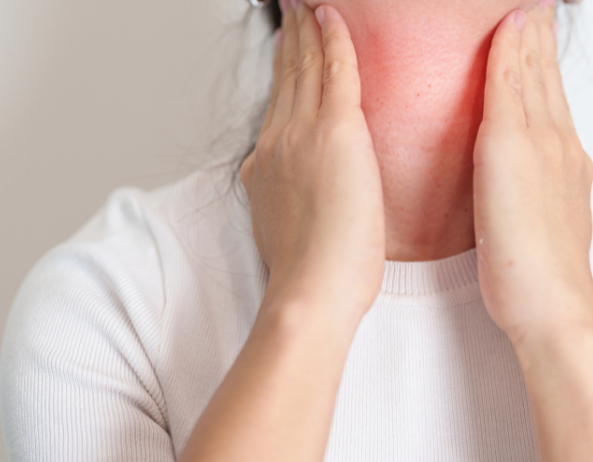Results for {phrase} ({results_count} of {results_count_total})
Displaying {results_count} results of {results_count_total}
Popular Searches: DiseasesTreatmentsDoctorsHospitalsWhole person careRefer a patientInsurance
Hyperthyroidism is a thyroid disorder caused by an overactive thyroid gland, leading to excessive production of thyroid hormones. These hormones, primarily thyroxine and triiodothyronine, regulate metabolism and energy production. If left untreated, hyperthyroidism can cause serious health complications. In Ayurveda, hyperthyroidism is considered an imbalance in the body’s doshas and Agni, affecting metabolism. Treatment at AyurVAID involves a whole-person approach to restore Agni functions and reset metabolism through personalized diet, lifestyle recommendations, stress reduction techniques, herbal formulations, detoxification procedures, and Panchakarma.



AyurVAID’s classical Ayurveda treatment protocols address the root cause of diseases. Our Ayurveda doctors assess symptoms, and history, and understand the patient’s condition based on Ayurveda parameters. AyurVAID’s hyperthyroidism treatment focuses on regulating metabolism and regaining health. Diagnosis is done through blood investigations, ultrasounds, and condition analysis. Treatment plans are individualized based on symptoms and severity, focusing on patient-centricity.

Risk Factors:
Complications:

Ayurveda Parasurgery Autoimmune Disorders Blood Disorders Cardiology Dermatology Endocrinology Ear-Nose Throat-Mouth Elder-Care Gastrointestinal Gynaecology Integrative Oncology Infectious-Diseases Liver-Hepato-Biliary-Care Mental Health and De-addiction Male-Reproductive-Disorders Nephrology Neurological-Disorders Orthopaedic Disorders Ophthalmology Obstetrics-Integrative Preventive-Health-Wellbeing Pulmonology Pediatric-Development-Disorder Sleep-Disorders
Any use of this site constitutes your agreement to the Terms and Conditions, Privacy Policy and Cancellation and Refund Policy
©2024 Apollo AyurVAID Hospitals. All rights reserved.
Popular Searches: DiseasesTreatmentsDoctorsHospitalsWhole person careRefer a patientInsurance